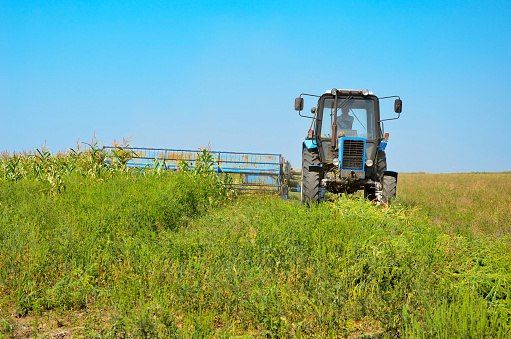Revolutionizing Fertilizing Rice: How Smart Fertilization Maximizes Yield and Sustainability
Fertilizing Rice, the staple food for billions, faces increasing pressure from a growing population, climate change, and resource scarcity. To meet this challenge, the agricultural sector needs innovative solutions. Smart agriculture, with its data-driven approach, offers a powerful tool for optimizing rice production – and fertilizing rice is a prime area where this technology can be implemented with significant benefits.
This article explores the role of smart fertilization in the context of smart agriculture, delving into its key components, advantages, and practical applications for rice farmers.
Contents
- 1 The Importance of Precise Fertilization for Rice
- 2 Smart Fertilization in Action: Key Components
- 3 Advantages of Smart Fertilization for Rice Farmers
- 4 Practical Applications of Smart Fertilization in Rice Farming
- 5 Overcoming Challenges and Considerations for Adoption
- 6 Conclusion: A Sustainable Future for Fertilizing Rice
The Importance of Precise Fertilization for Rice
Fertilizers provide essential nutrients for rice growth, directly impacting yield and quality. However, traditional, blanket application methods often lead to inefficiencies and environmental concerns.
- Overfertilization: Excess fertilizer can harm the environment by polluting waterways with nitrate runoff, leading to algae blooms and disrupting aquatic ecosystems.
- Underfertilization: Inadequate fertilizer application results in stunted growth, reduced yield, and lower overall rice quality.
Smart fertilization aims to address these issues by delivering the right amount of fertilizer at the right time, in the right place. This targeted approach offers a win-win situation for both farmers and the environment.
Smart Fertilization in Action: Key Components
Smart Fertilizing Rice leverages several technological advancements to achieve precision application:
- Soil Sensors: These sensors provide real-time data on soil nutrient levels, moisture content, and other parameters crucial for fertilizer decisions.
- Yield Monitors: These tools track the growth and health of rice plants, revealing areas that may require additional nutrients or indicating potential deficiencies.
- Geographic Information Systems (GIS): GIS technology allows farmers to create detailed field maps, enabling them to identify specific zones with varying nutrient requirements.
- Variable Rate Technology (VRT): This technology integrates data from sensors and GIS to automatically adjust the fertilizer application rate across the field, ensuring precise delivery based on specific needs.
- Decision Support Systems (DSS): DSS software analyzes sensor data, yield monitor information, and historical trends to recommend fertilizer application rates and timings.
Advantages of Smart Fertilization for Rice Farmers
The adoption of smart Fertilizing Rice practices offers a range of advantages for rice farmers, including:
- Increased Yield Potential: By providing the right nutrients in the right amount, smart fertilization promotes optimal plant growth, leading to higher yields.
- Reduced Fertilizer Costs: Precise application minimizes fertilizer waste, resulting in significant cost savings for farmers.
- Improved Environmental Sustainability: Smart fertilization helps to reduce fertilizer runoff, protecting water resources and promoting ecosystem health.
- Enhanced Data-Driven Decision Making: The data gathered through smart fertilization practices helps farmers make informed decisions about future crop management strategies.
- Improved Labor Efficiency: Automated systems can significantly reduce the time and manpower required for fertilizer application.
Practical Applications of Smart Fertilization in Rice Farming
The concept of smart Fertilizing Rice can be implemented in various ways depending on the technology available and farm size:
- Grid Soil Sampling: Dividing the field into grids and collecting soil samples from each grid enables a basic level of targeted fertilization.
- Sensor-Based Zone Management: Using soil sensors strategically placed across the field allows for differentiated fertilizer application based on identified zones with varying nutrient needs.
- Precision Application with VRT: Integrating VRT with tractors equipped with GPS and sophisticated delivery systems allows for the most precise application of fertilizer, maximizing efficiency.
Overcoming Challenges and Considerations for Adoption
While smart Fertilizing Rice offers significant benefits, there are challenges to consider:
- Technology Cost: The initial investment in sensors, VRT equipment, and software can be a hurdle for some farmers.
- Data Literacy: Understanding and interpreting data from sensors and DSS requires training and familiarity with technology.
- Infrastructure and Connectivity: Limited access to internet connectivity and reliable power sources in some rural areas can pose a challenge.
Government support, technology innovation focused on affordability, and farmer training programs can help overcome these barriers and facilitate widespread adoption of smart fertilization practices.
Conclusion: A Sustainable Future for Fertilizing Rice
Fertilizing Rice represents a significant step towards achieving sustainable and efficient rice production. By harnessing the power of data and technology, farmers can optimize fertilizer application, maximizing yield, minimizing environmental impact, and ensuring the long-term viability of rice production. As the technology becomes more accessible and affordable, smart fertilization has the potential to revolutionize rice farming practices and contribute to a more secure and sustainable food supply for the future.




